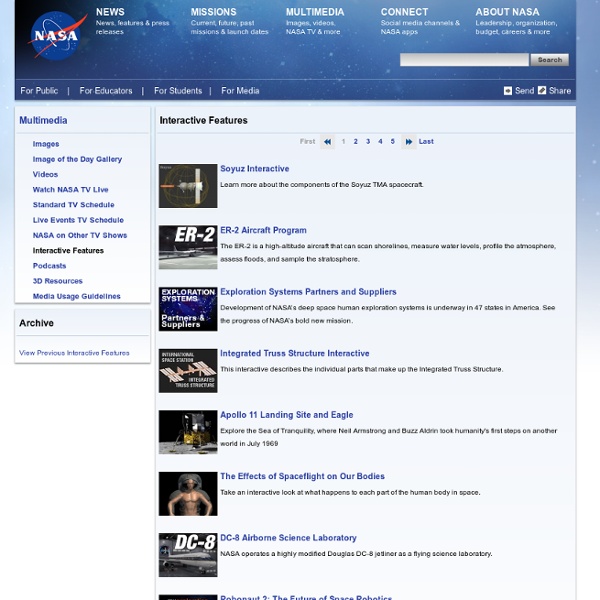



Interactive 3D model of Solar System Planets and Night Sky Solar System, Solar System Information Our Cosmic Neighborhood From our small world we have gazed upon the cosmic ocean for thousands of years. Ancient astronomers observed points of light that appeared to move among the stars. They called these objects "planets," meaning wanderers, and named them after Roman deities—Jupiter, king of the gods; Mars, the god of war; Mercury, messenger of the gods; Venus, the goddes of love and beauty, and Saturn, father of Jupiter and god of agriculture. The stargazers also observed comets with sparkling tails, and meteors or shooting stars apparently falling from the sky. Since the invention of the telescope, three more planets have been discovered in our solar system: Uranus (1781), Neptune (1846), and, now downgraded to a dwarf planet, Pluto (1930). The four planets closest to the sun—Mercury, Venus, Earth, and Mars—are called the terrestrial planets because they have solid rocky surfaces. Nearly every planet—and some of the moons—has an atmosphere. Moons, Rings, and Magnetospheres
Otkriven „groteskni“ brat blizanac Sunčevog sistema - National Geographic Srbija Sistem GJ676A je mnogo veći od našeg, ali mu veoma nalikuje, kažu astronomi… Astronomi su uočili našeg, kako kažu „grotesknog“ blizanca: planetarni sistem organizovan vrlo slično kao Sunčev sistem, otkriva se u novoj studiji. Nazvan GJ676A, sistem je koji ma dve kamenite planete koje orbitiraju u blizini zvezde i dva gasovita giganta koja su udaljena. To znači da je sistem uređen vrlo slično kao naš – osim što je u GJ676A sve mnogo veće. Na primer, najmanja kamenita planeta u ovom sistemu ima masu najmanje četiri puta veću od Zemlje, dok je najveći član sistema pet puta veći od Jupitera. I drugi sistemi koji se sastoje od više planeta su otkriveni do sada, poput onog nazvanog HD10180, koji se smatra najbogatijim egzoplanetarnim otkrićem jer ima sedam do devet planeta koje orbitiraju oko zvezde. Dugačke orbite gasovitih giganata i kratke orbite ekstremno toplih super Zemlji su ono što je navelo astronome da nazovu GJ676A bratom blizancem našeg Solarnog sistema.
NASA Earth Observatory : Home Physics Flash Animations We have been increasingly using Flash animations for illustrating Physics content. This page provides access to those animations which may be of general interest. The animations will appear in a separate window. The animations are sorted by category, and the file size of each animation is included in the listing. Also included is the minimum version of the Flash player that is required; the player is available free from In addition, I have prepared a small tutorial in using Flash to do Physics animations. LInks to versions of these animations in other languages, other links, and license information appear towards the bottom of this page. The Animations There are 99 animations listed below. Other Languages and Links These animations have been translated into Catalan, Spanish and Basque: En aquest enllaç podeu trobar la versió al català de les animacions Flash de Física. These animations were written by David M.
Monster Galaxy Cluster 'El Gordo' Packs Mass of 2 Quadrillion Suns AUSTIN, Texas — The largest cluster of galaxies seen yet in the early universe, a giant that astronomers have dubbed "El Gordo," could one day reveal secrets about the invisible dark matter that fills the universe, researchers said. El Gordo — which means "the fat one" in Spanish — is officially known as ACT-CL J0102-4915 and "is located more than 7 billion light-years from Earth, at a time when the universe was half its current age," study co-author John Patrick Hughes at Rutgers University told SPACE.com. The universe is about 13.7 billion years old. The monster galaxy cluster has mass about 2 quadrillion (that's 2 followed by 15 zeroes) times that of the sun, making it "the most massive known cluster in the distant universe." A galaxy cluster behemoth Galaxy clusters form through mergers of smaller groups of galaxies. Dark energy seems to make up 73 percent of all the mass and energy in the universe, and is driving the accelerating expansion of the universe. El Gordo, a hot galaxy group
Birth of the Moon | SpaceRip Posted by admin on Saturday, February 11, 2012 · The latest episode of Cosmic Journeys, enjoy in full HD 1080p. Scientists have been reconstructing the history of the moon by scouring its surface, mapping its mountains and craters, and probing its interior. What are they learning about our own planet’s beginnings? Decades ago, we sent astronauts to the moon as a symbol of confidence in the face of the great cold war struggle. Landing on the moon was a giant leap for mankind. When the astronauts of Apollo stepped out of their landing craft, they entered a world draped in fine sticky dust, strewn with rocks, and pocked with craters. Back in earth-bound labs, scientists went to work probing the rocks for clues to one of the most vexing questions in all of science. The nature of the moon began to come into focus four centuries ago. What was the nature of the heavens, and how did the world of men fit within it?
NASA Robotics - Robotics Alliance Project